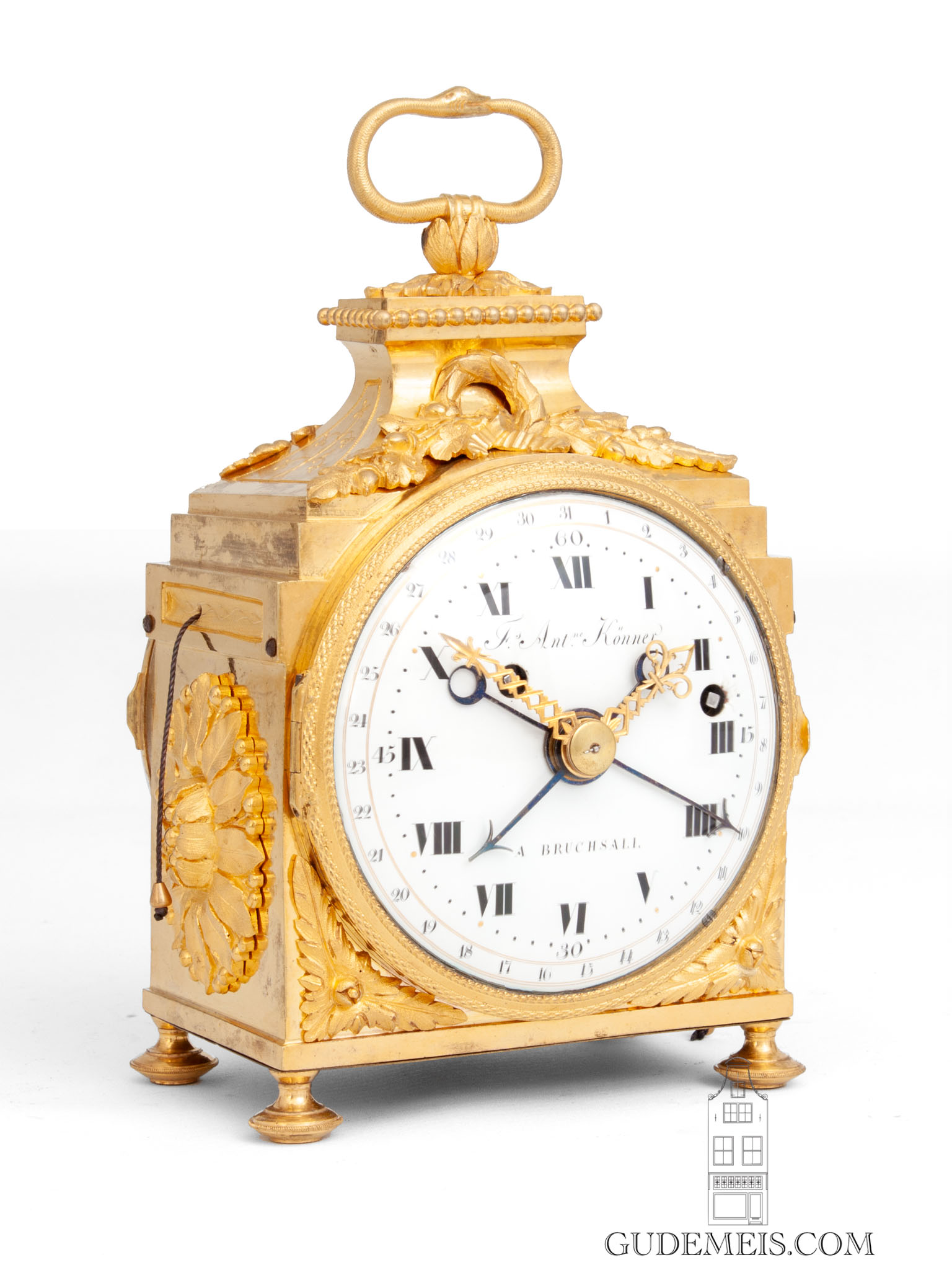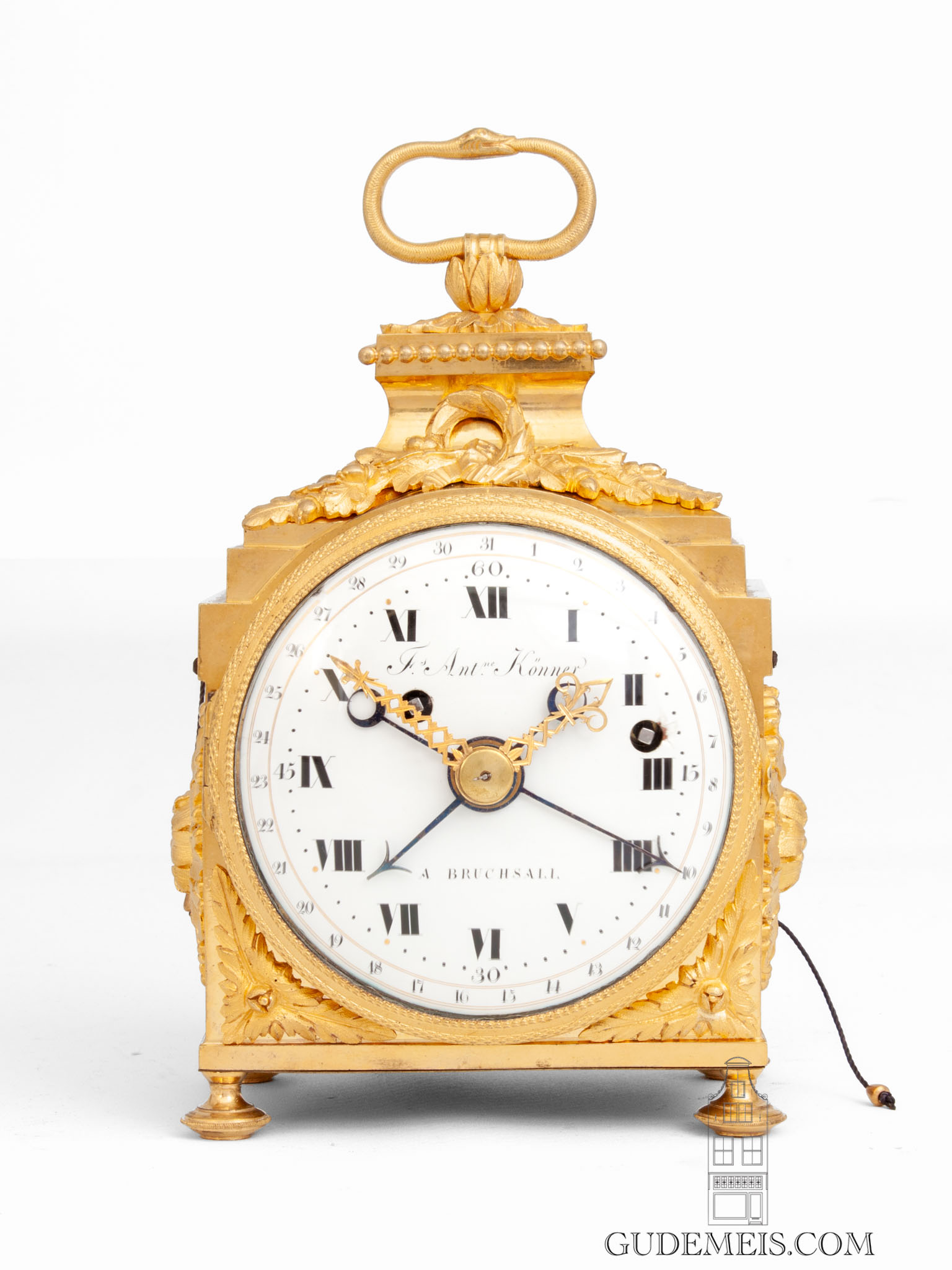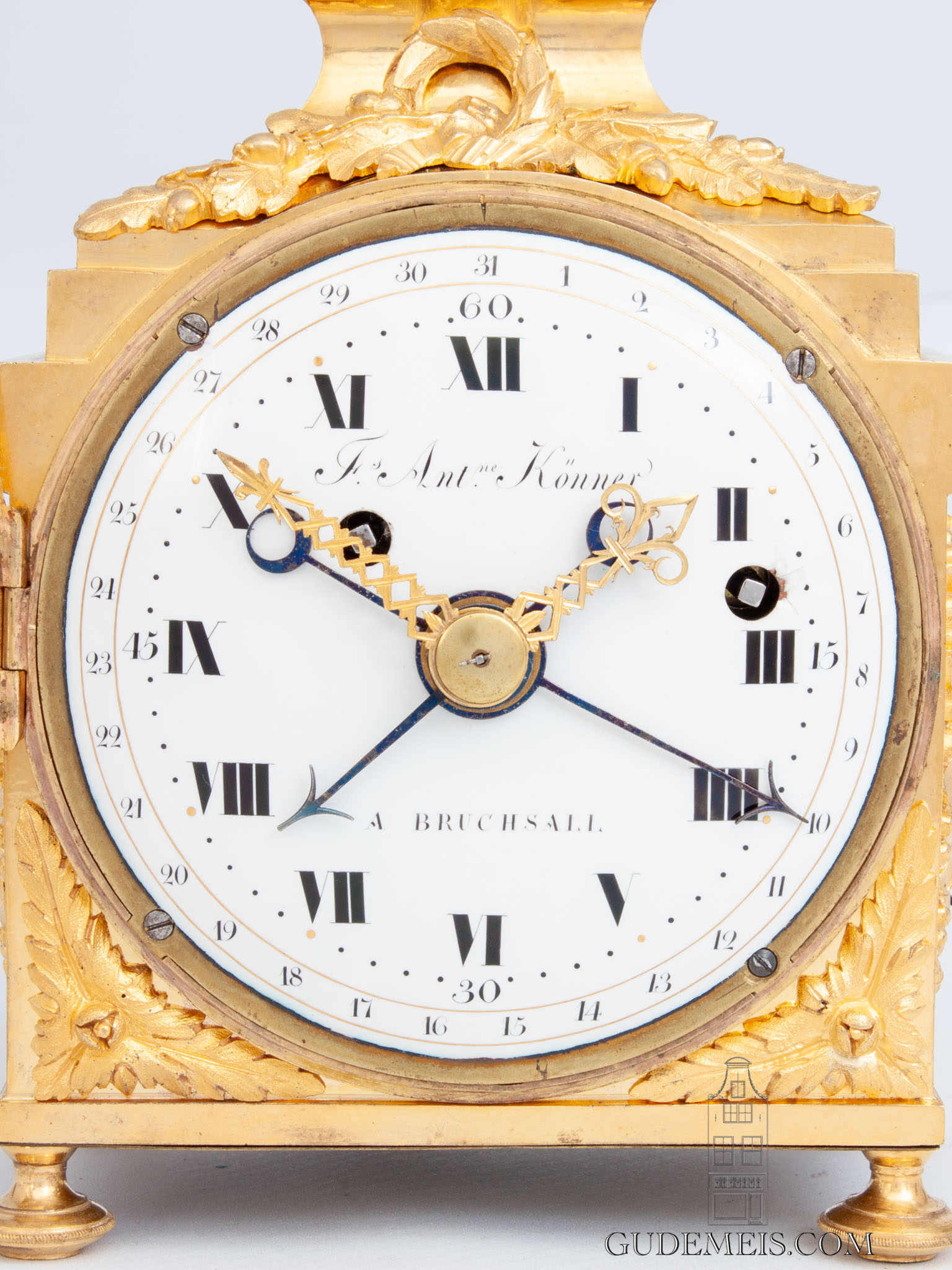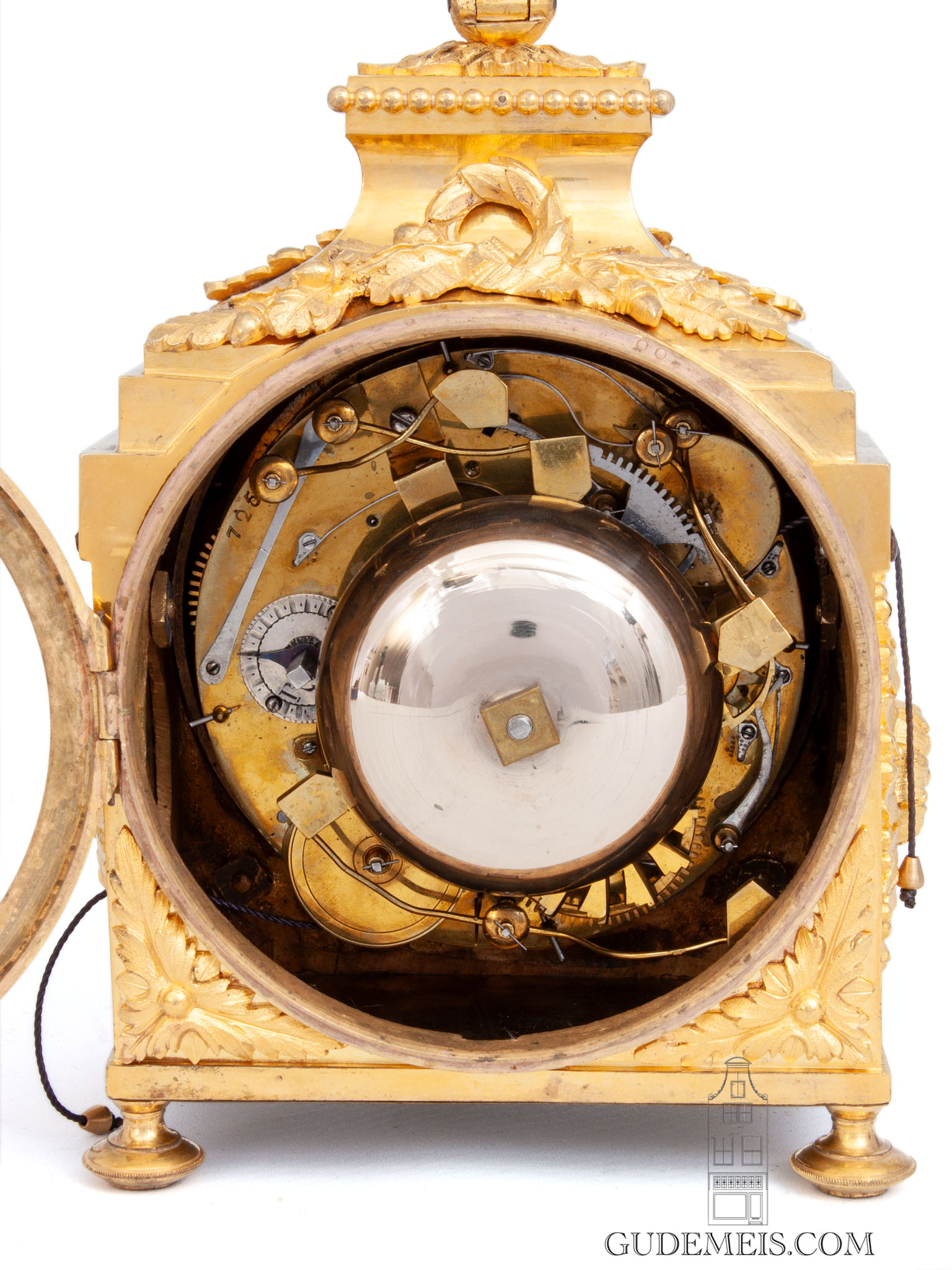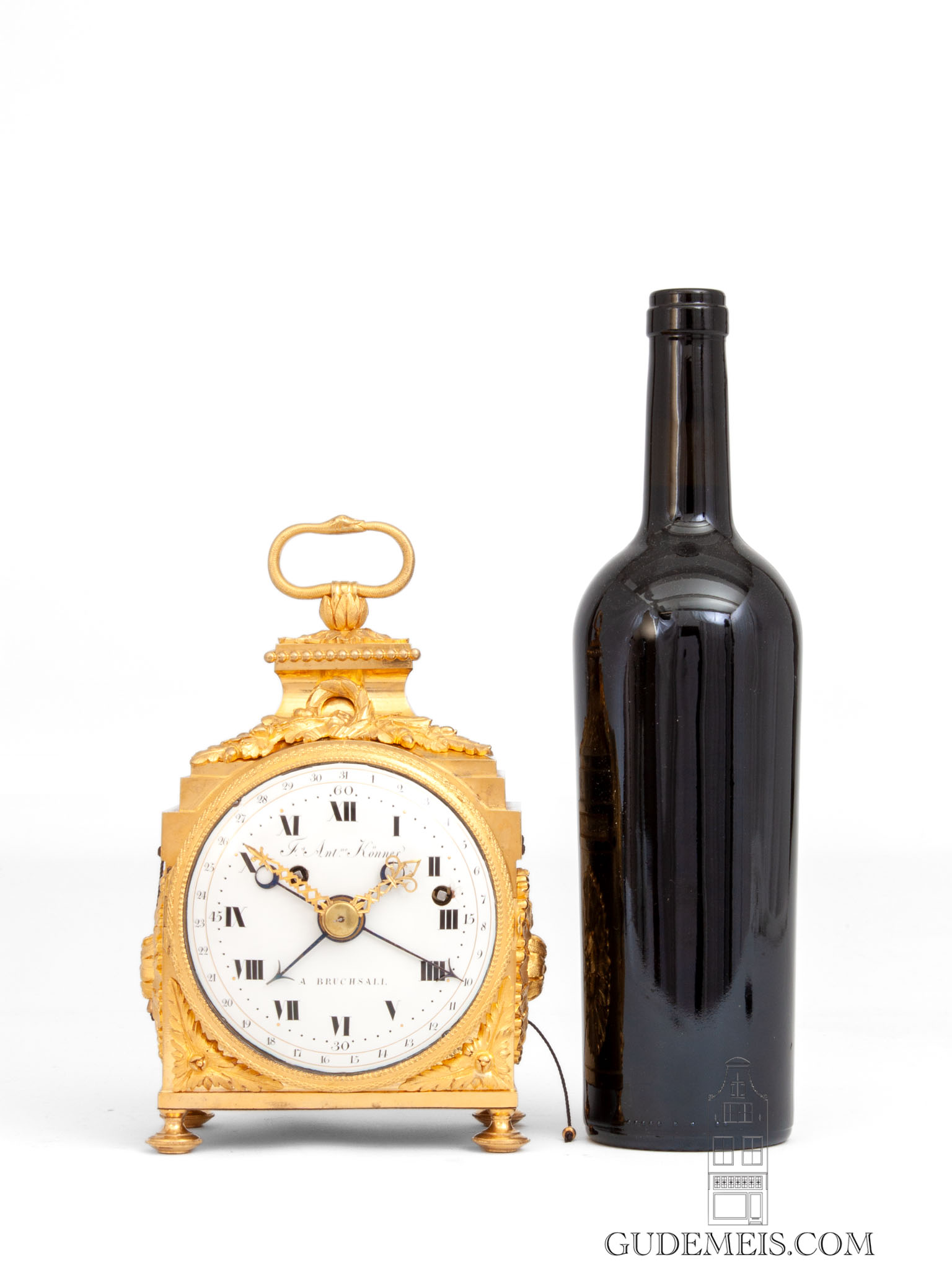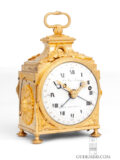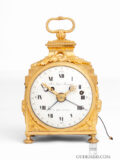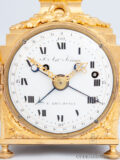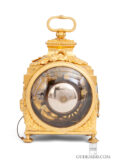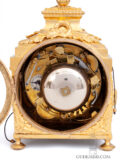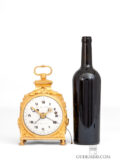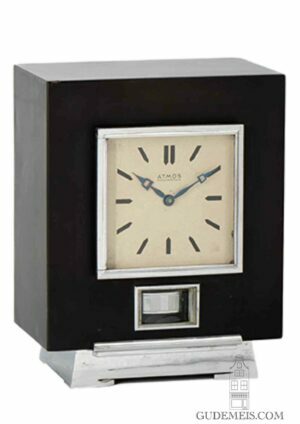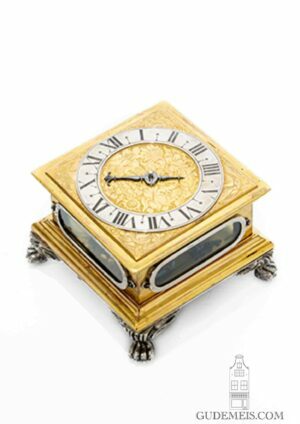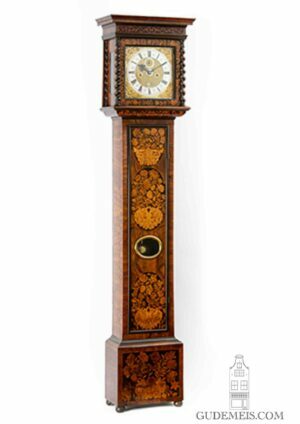A Swiss Louis XVI ormolu quarter striking ‘pendule d’officier’ F.A. Könner, circa 1790.
Description
Pendule d’officier
This a ‘pendule d’officier’ which is an early type of travel clock that was provided with an expensive case made of gilt bronze or exotic woods. Although the term translates to ‘officer’s clock’ it was not only used by the military but also by the upper echelon of society who afford one.
It was either the small demand or the small production which made that travel clocks were very rare before the second quarter of the nineteenth Century. From the clocks that have survived we can conclude that from 1760 on there was a small demand for travel clocks. Many of these early clocks are very individual in appearance and were probably executed with features bespoke beforehand by the client for which it was made. Around 1790 in the Jura located in the border region of France and Switzerland a production evolved that was more standardized. These were made to be sold by others and to accommodate the wishes of potential clients these clocks were executed with many different features. And so this fine clock was executed with quarter striking, repetition and alarm. All very useful for travel or the sleeping quarters. The compact ormolu Louis XVI case was not only practical but also very attractive which many still find today. Finally there is the dial which has an un usual but attractive date indication. In my opinion the icing on the cake for this fine piece.
Fleur-de-lis
The 10-cm enamel dial has Roman numerals and is signed Fs. Ant.ne Könner A Bruchsall. At the outer rim are two gilt lines in between which are the date numerals 1-31. On the inside of this rim there is the callibration for the minutes indicated by dots and quarter numerals. The gilt and engraved hands are of the ‘fleur-de-lis’ type. The alarm- and date hand are made of blued steel.
Quarter striking
The movement is driven by two spring barrels and is of thirty hour duration. The going train has fusee and chain and is regulated by verge escapement in combination with a balance wheel. The clock has quarter striking by means of rack striking on two bells. It also has pull quarter repeat. When pulling a cord a small spring barrel will be wound to activate the quarter repeating sounding the hour and quarters that were past. The alarm that strikes on a single bell also has pull winding.
Louis XVI
The mercury gilt case is surmounted by a handle shaped as a snake. The acanthus leaves to the front and top together with the rosettes on the sides are characteristic for the Louis XVI era. The case is raised on toupee feet.
The clockmaker
Franz Anton (François-Antoine) Könner was born in Bruchsal in 1757. It is recorded that he got married in 1786. He became clockmaker to the court of Fürstbischof’ August von Bruchsal Duke of Limburg-Stirum. Franz-Anton died in 1824. Lit.; Jürgen Abeler, Meister der Uhrmacherkunst, 2010, pp.306.
